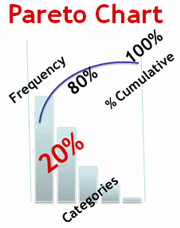Overview
Example 2
b) Total direct labor cost
- The resources required to produce the given amounts of a product tend to decline as output accumulates
- Cause of decline -- > learning curve. Workers become more adept at a task the more they perform it. This is measured mathematically
- Cumulative average time per unit/batch decreases by a fixed percentage each time the cumulative production doubles
- Learning rate = %
When does learning curve theory apply?
- Labor intensive - product made largely by labor effort
- New - brand new or relativity short-lived product
- Complex - product made in small quantities for special orders
Example 1
A firm with a learning rate of 80% takes 50 hours to make its first unit. It has now made a total of 16 units. How long will the next 16 units take?
Formula Approach
- Derive the formula for the 80% learning rate and apply it to confirm the cumulative average time per unit for 16 batches in the previous illustration
- Using the same formula, calculate the cumulative average time per unit for 20 batches
- The formula is calculated as follows:
- b = log 0.8/log 2 = -0.322
- y = ax -0.322
- At 16 batches: 50 x 16 -0.322 = 20.48
- At 20 batches: 50 x 20 -0.322 = 19.06
Uses of the learning curve
- Price setting
- Budget setting
- Production scheduling
Limitations of learning curve theory
- Not always present
- Assumes stable conditions which allow learning to take place
- Assumes certain degree of motivation among employees
- Breaks between repeating production of an item must not be too long or workers will forget and learning will have to begin again
- Maybe difficult to obtain enough accurate data to decide what learning factor is
- Learning is eventually cease
Practice Test
36 Batch Processing (10 Marks)
- Standard direct labor cost of one batch of 100 units of product is $50.40
- Standard time of 4.2 hours @ $12 per hour, with average time expected per batch based on product life of 12,800 units or 128 batches
- Expected time for the first batch was 20 hours and an 80% learning curve
- Company already completed 32 batches with total actual direct labor cost of $3,493
- Direct labor variances:
- Direct labor rate = $85 adverse
- Direct labor efficiency = $891 adverse
- Required:
- Actual rate of learning
- Total direct labor cost
- Answers:
a) Y = axb
- Standard cost of actual labor hours worked is actual cost less the adverse direct labor rate variance
- $3,493 - $85 = $3,408
- Actual labor hours worked is $3,408/$12 = 284 labor hours
- Hours per batch = 284/32 = 8.875 hours per batch
- Learning rate = 5√(8.875/20) = 0.85 = 85% --> 32 batches represents 5 doublings of output
- Actual labor rate is $3,493/284 = $12.30 per hour
- b = log .85/log 2 = -0.2345
- Average time: Y = axb
- 20 X 128 -0.2345 = 6.41 hours
- Total cost = average time x no. of batches x actual labor rate
- 6.41 x 128 x $12.30
- $10,092
37 The Learning curve effect
- Actual output is 560 units, 3500 hours at a cost of $57,750
- Standard time of 8 hours @ $15 per hour
- Expected time for the first 600 units was 8 hours and an 90% learning curve
- Direct labor variances:
- Direct labor rate = $5,250 adverse
- Direct labor efficiency = $14,700 Favourable
- Required:
- Planning and Operating variances
- Importance of learning curves in the context of Target costing
- 90% learning index of -0.1520
- Answers:
a) Y = axb
- Y = 8 X 560 -0.1520 = 3.057 hours
- Total time for 560 units (560 X 3.057 hours) = 1,712 hours
























